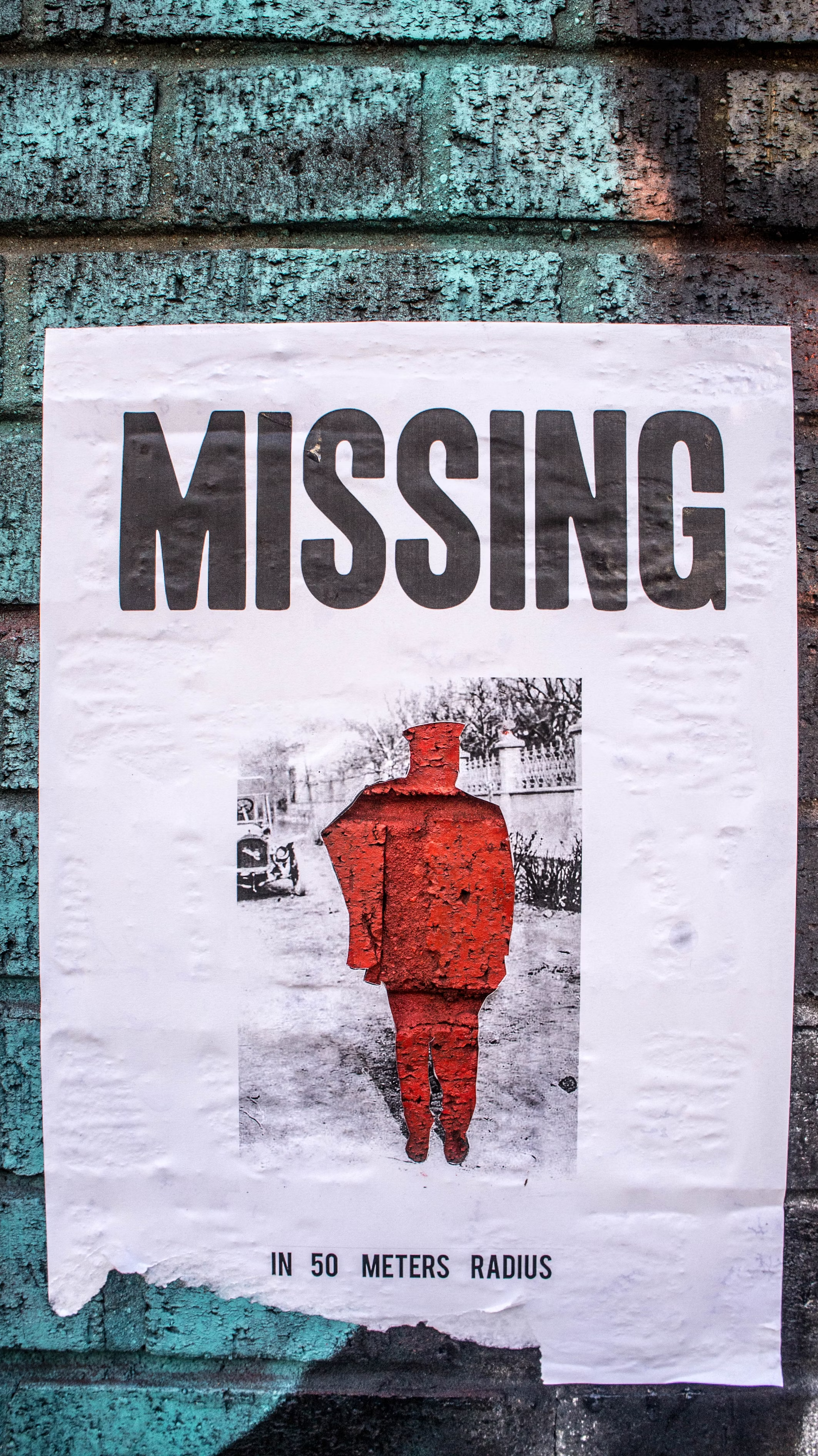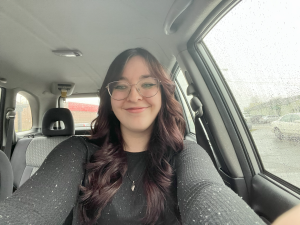5 Missing White Woman Syndrome
Faith Harris
“Missing white woman syndrome” is the phenomenon of missing white women receiving a significantly higher amount of media attention that women of color.
Issue Summary

People became more aware of Missing white woman syndrome during the search for Gabby Petito, a young white woman who went missing in 2021. The public criticized the amont of media attention the young woman was receiving compared to women of color who were also missing around the same time.
This issue can cause women of color who are vicitims of kidnapping and violent crimes to have less attention given to their case, which in turn can cause them to never receive justice.
This is also an issue of information inequality. Because of the lack of media attention that missing women of color receive, the public often doesn’t even know they are missing. This makes it less likely that the victims will be found because the public will not know to keep an eye out for the missing women. The public doesn’t know to be on the lookout for someone that they do not even know is missing.
Key Stakeholders
Identify your key stakeholders
- Classmates
- News Outlets
- Police Departments
- Families of Missing Persons
News outlets are stakeholders in this issue because they are the ones that tend to publish more articles about missing white women than women of color, whether intentionally or unintentionally. Depending on how aware their readers are of “missing white woman syndrome,” this could either help or harm the amount of traffic they receive on certain articles. This stakeholder has a lot of interest in this topic because they are who the conversation of missing white woman syndrome focuses on. They are who decides which cases to report on and which ones not to. This could be dependent on multiple different factors: the biases of the heads of the news outlets, the amount of evidence present in different cases, which cases they think will attract the most readers, etc.
Police departments are a stakeholder in this issue because the amount of coverage cases receive could impact their investigations. Police departments also tend to receive backlash for how much attention they give cases involving white women vs. women of color, so that could potentially be another point of conversation. This conversation could potentially be tricky because certain police departments may be more willing to have this conversation than others depending on where they are located. It will also be important to consider the locations where they are located because if they are located in a predominantly white city, this could provide us with interesting data.
Families of missing persons* are stakeholders in this issue because they are directly impacted by the coverage (or lack thereof) of their loved one’s case. The amount of coverage their loved one’s case gets could be a contributing factor in how likely their case is to be solved. Families of missing persons possibly have the highest stakes in this issue because they are directly involved. It is their loved one that is either being reported on or ignored. The amount of coverage they receive could impact how likely they are to see their loved one again, so they would most likely be passionate about this issue and want to do something about it.
*I also want to note for this particular stakeholder that (because this is a delicate topic) I would only have this conversation with those who were comfortable having it with me. Because people have different levels of comfort and cope with grief in different ways, this conversation should not be forced on those who do feel comfortable having it.
Historical Context
The points on my timeline mainly focus on actions being taken to reduce the disparities in media coverage when it comes to missing women. Most of these points focus on laws/bills and organizations created by people of color for people of color. They aim to bring attention to the violent crimes women of color have been victims of and find ways to reduce the rate of these crimes, such as murder, human trafficking, and domestic violence.
I also included the disappearance of Gabby Petito, which served as a kind of catalyst to bring attention to the term “missing white woman syndrome.” The amount of attention the young woman received stuck out to people when comparing it to the amount of coverage other missing women received. I also wanted to include this because this case is also the first time I heard the term and was prompted to learn more about it.
Connections to Social Justice and Citizenship
Social Justice Implications
One definition of social justice says “Social justice includes a vision of society in which the distribution of resources is equitable and all members are psychologically and physically safe and secure” (Bell, L. (2016). “Theoretical Foundations for Social Justice Education”). This inequality disrupts the right of women of color to be physically safe. Missing women of color not receiving as much media attention impacts the likelihood of them being returned home safely.
This is also a social justice issue because it shows the racial bias that is present in the media. The lack of media attention around women of color who are victims of violent crimes portrays a message (whether intentionally or unintentionally) that these women are less important than white women. This disrupts the goal of social justice to create an equitable world for everyone.
If this problem were addressed, many people would benefit. The public would become more informed citizens, women of color could potentially feel safer in their environments, and the families of missing persons could have more hope that their loved one would come home to them. This could also potentially help bring justice to cold cases involving women of color by bringing attention to them and reigniting the investigation. The media is a powerful thing, and if the public learns about women who never received justice, they could prompt law enforcement in their area to reopen the case.
Citizenship Implications
It is important for citizens to be aware of this issue because it inhibits their ability to help their community. One of the definitions of citizenship says “…informal citizenship is based on meeting of human and community needs through a particular local and moral community.” Nordensvard, J. & Ketola, M. (2022). One part of being a citizen is looking out for the people in your community. When missing persons receive media attention, the people in the community where they went missing can be aware and keep an eye out for the missing person, which is a huge help to the formal channels looking for them.
When missing women of color go missing, because of the lack of attention the media gives them, people are less likely to even know that they are missing. This impacts their ability to be informed citizens by knowing what is going on in their community, and impacts their ability to be a citizen by helping search for the missing person. The more people searching for a missing person (or even just being aware and keeping an eye out for them), the more likely that person is to be found. Due to missing white woman syndrome, citizens are less likely to know about missing women of color, making them less likely to be found.
Facilitating Conversations
Consider how you would engage other in a dialogue on this topic. How would you engage someone who perhaps has an opposing view on this? How would you engage a key stakeholder on this issue?

How do you engage with someone who has been impacted on this topic? How do I listen to someone who has been impacted by this issue? How might you need to change your approach for your different stakeholders?
Action Plan
Provide short, medium, and large actions that you can take to mitigate this problem.
Short Term
For my small-scale plan, I plan to edit Wikipedia pages to be more inclusive and target the public as a stakeholder. I intend to do a Wiki edit-a-thon to make people who use the site more aware of missing women of color. This plan should be effective because Wikipedia has been criticized for its biases before, and there are already groups of people who are working to combat this (Lapowsky, 2015). I will be able to measure this effectiveness by watching how many “hit” the Wikipedia pages get. By achieving this goal, it will bring more awareness to the public about missing women and help reduce information inequality.
Medium Term
For my medium-scale plan, I plan to interview families of missing women of color about their experience with the media to target both the families and the media as stakeholders. I intend to do these interviews to give the families (and by extension, the victims) a voice that may have otherwise been silenced. This should be effective because this is the dominant approach of journalists in the world today (Carpenter 2017). This one would be difficult to measure the “effectiveness” because I would consider this successful as long as the families feel heard, so I suppose asking them after the fact and coming up with compassionate questions will be the best option for “measuring” the success of this. By giving these families a voice, it should bring awareness to missing women and potentially help call out the bias in media.
Long Term
For my large-scale plan, I intend to create a news source that focuses entirely on reporting about missing women of color and target the public and other news sources as my stakeholders. I intend to do this to bring more media attention to these women. This plan should be effective because readers are seeking diverse and inclusive media outlets (Bourgault 2021). I can measure how effective this is by paying attention to how many people use this news source and potentially provide a survey on the site about how people feel about this news outlet. By bringing more attention to these women, it should hopefully influence other sources to do the same to reduce the bias in media.
Advocacy
What are some examples of how you could advocate for change on this issue? Related to the elevator speech assignment. How do you make people care about your issue? How do you connect this to making change as an active and informed citizen?
Resources and Discussion Questions
What are some resources that others can use to learn more about the issue? What are some relevant discussion questions?
Provide 4-5 recommended readings (or videos) that your audience can use to learn more about the topic. The recommendations should be relevant to the topic or issue and are at an appropriate level for the intended audience.
You should also provide 3-4 discussion questions that are intended to encourage the audience to critically reflect on or engage with the topic or issue.
Citations
Burnham, L. (2022, January 20). The activist roots of Black Feminist theory. Convergence. https://convergencemag.com/articles/the-activist-roots-of-black-feminist-theory/
Lapowsky, I. (2015, March 5). Meet the editors fighting racism and sexism on Wikipedia. Wired. https://www.wired.com/2015/03/wikipedia-sexism/
Bourgault, J. (2021, December 1). Diversity in the newsroom can build better media. here’s why. World Economic Forum. https://www.weforum.org/agenda/2021/12/diversity-in-news-media/
Carpenter, S., Cepak, A., & Peng, Z. (2017). An Exploration of the Complexity of Journalistic Interviewing Competencies. Journalism Studies, 19(15), 2283–2303.
https://doi.org/10.1080/1461670X.2017.1338155
Author Bio
 Faith Harris is going into her 4th year at The Ohio State University, studying English/creative writing and psychology. She works in the Teaching and Learning Department as a Course Analyst. She loves to read, write, play games, and spend time with her pets.
Faith Harris is going into her 4th year at The Ohio State University, studying English/creative writing and psychology. She works in the Teaching and Learning Department as a Course Analyst. She loves to read, write, play games, and spend time with her pets.
Backup document: ICSJ Course – Pressbook Chapter.docx
